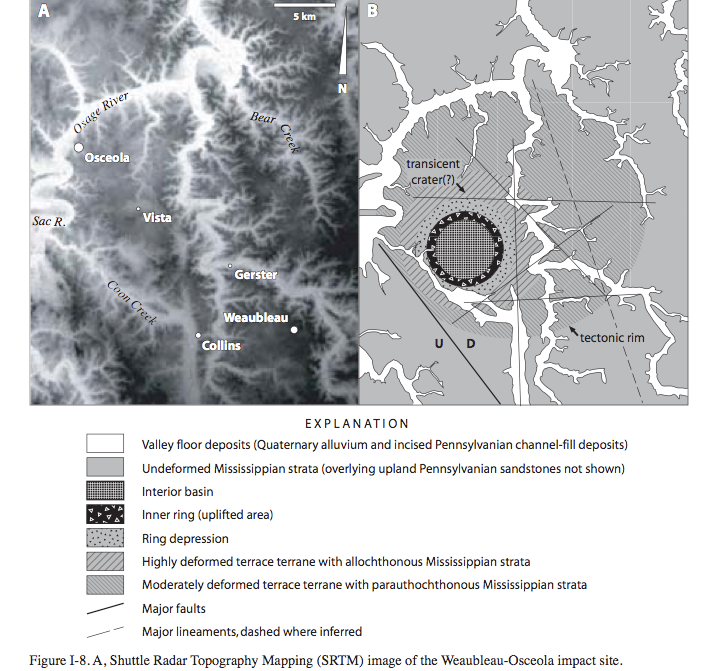
Frankewing, TN Impact Debris Field Range


The multi county impression of the mineral signature is so large the size of the Frankewing, TN Impact Event forecast a debris field stretching over most of the state and into adjoining states. As this was an impact into a sea the nature and type of dispersal is difficult to model.

The brown iron ore as a debris field makes a stopping rise along the western highland rim. It is thought to be simi volcanic in origin but no such structures have been found.
Additional metal bolide debris metals have been found near Elkton, TN closer in to the blast and at Cobel, TN in Hickman County 70 miles NE.

Picture of simulated impact into what was a sea at the time. The dispersal would be large with so much energy.

So all the calculations are wrong for the Barringer Crater? To sling debris 200 miles is a lot more energy than is presently understood.
Impact Glass Agate! - Found at Farmington, NM. Is from the Barringer Crater 200 miles SW. Or could be another impact that deposited the surrounding uranium.

Highly shock melted breccia from Chicxulub Mexico Impact. Found in Rockledge, Florida. 500+ miles. Or it could be from the South Florida swamp impact.

Specimen above is from Madison County, AL and is blasted from the Frankewing, TN Impact. Nice fractal and harmonic waveform with the nano iron mist and Constellationing.
.jpg)
While glass type impactites are just one of so many types since they are prized it is easy to follow the world distribution. As with other global indicators the first thing I look for is a circular structure.

Tektites are pebble-sized, often intricately shaped glass objects. They are much like obsidian glass, which is formed by terrestrial volcanic eruptions, except tektites have a far higher melting point and a thousand times less water content. Tektites are mainly composed of silica and contain bands of lechatelierite silica glass, which is formed naturally when lightning strikes quartz sand. Under the microscope, they display very little or no crystal structure.
The dominant theory is that they were created by meteorite/asteroid impacts several million years ago. The incredible heat and pressure generated by a huge space rock smashing into Earth would melt rocky layers and blast rubble at high velocity into the atmosphere. This would rain down over the impact site, to a distance of 6,000 kilometres (3,730 miles), as tektites. As they fell to the ground, they morphed into various shapes, like discs, dumbbells, spheres, rods and teardrops.
This theory is supported by the fact that strewn fields of tektites surrounding one impact area are distinct from the type of tektites found surrounding another impact site.
.jpg)
Shock made Tektite - Besides the inclusions you can tell by the surface patterns. They are in the shock configuration. Davao City Philippines. Carlos Benedict B. Palabrica

Two stage impact nodule after sphere. Called a "Weaubleau egg" Was once part of the limestone strata but shock melted into drops which are expelled outward from the crater sometimes getting a second layer in the mass of outward molten material. Aug. 12, 2024. Rockhounding For Beginners - The OriginalJennifer Rothrock · ·Thank You for excepting me I live in the very top of Missouri that borders Iowa. This has to be the most unusual one I have found it was partially buried dug up and seen the perfect circle I still don’t have a definitive answer as to what it is? 🤷🏻♀️ but it is truly fascinating to mehttps://en.wikipedia.org/wiki/Weaubleau_structure#Round_rocks

First of all the size of this crater is greatly underestimated. Rivers tend to follow the inside crater wall or outside. Aug. 12, 2024.

Heading 4
Wow, would you just look at the range it threw those balls! Aug. 12, 2024. Weaubleau eggs are a type of rock which only forms in the area around Weaubleau, Missouri. They are spherical nodules, composed primarily of chert nucleated around siltstone clasts from the Northview Formation.[1] These nodules have been found as far away as Newton County, Missouri, approximately 125 miles southwest of the impact area.
